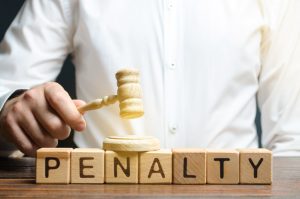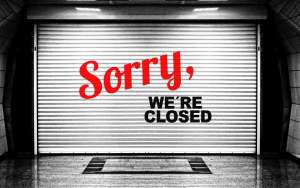Understanding the language and terms used in property insurance policies is crucial for public adjusters. By mastering the definitions of common terms, public adjusters can effectively navigate the insurance claims process and help their clients secure fair settlements.
This guide will provide public adjusters with a comprehensive understanding of key terms such as insurance coverage, dwelling limit, replacement cost policy, additional living expenses, and more. With this knowledge, public adjusters can advocate for their clients and ensure that they receive the maximum settlement to cover the cost of repairs, additional expenses, and other damages.
By studying and applying these definitions, public adjusters will be equipped with the necessary knowledge to negotiate with insurance company adjusters, effectively manage the claims process, and provide invaluable assistance to property owners.
Definitions of Common Terms in Property Insurance Policies
- Insurance Coverage: Refers to the specific scope of protection provided by an insurance policy. This outlines the types of losses or damages that are covered, including property damage, additional living expenses, and personal liability.
- Dwelling Limit: The maximum dollar limit set by the insurance policy for the rebuilding or repair costs of the insured property’s structure (e.g., building, home, or other structures).
- Replacement Cost Policy: A type of property insurance policy that covers the cost of replacing damaged property with new property of similar kind and quality, without deduction for depreciation.
- Additional Living Expenses: Also known as ALE, this coverage helps policyholders to pay for additional expenses incurred due to temporary displacement from their home or property as a result of covered damage.
- Actual Cash Value: Refers to the value of property or damages at the time of loss, taking into account depreciation and wear and tear.
- Additional Premium: An extra cost charged by the insurance company to provide coverage for additional risks or higher policy limits beyond the standard policy terms and conditions.
- Fair Settlement: A monetary amount negotiated by the public adjuster on behalf of the insured that accurately reflects the costs of repairs, replacement, and additional expenses incurred due to covered damages.
By having a clear understanding of these and other key terms, public adjusters can effectively navigate property insurance policies, advocate for their clients, and ensure that they receive fair settlements for their claims.
Why Understanding Property Insurance Policy Language is Important
Understanding property insurance policy language is of utmost importance for public adjusters. It allows them to effectively navigate the claims process and negotiate fair settlements on behalf of their clients. By comprehending the intricacies of policy language, public adjusters can accurately interpret coverage limits, deductible amounts, and additional living expenses.
The ability to decipher complex terms and conditions is invaluable in advocating for policyholders. Public adjusters who possess a deep understanding of policy language can provide professional assistance to their clients, ensuring they receive maximum claim settlements. This knowledge enables public adjusters to assess the extent of coverage and accurately calculate the costs of repairs, replacement, and additional expenses incurred due to covered damages.
Without a thorough understanding of property insurance policy language, public adjusters may struggle to navigate the claims process effectively. They may misinterpret coverage limits, leading to inadequate settlements for their clients. In contrast, those who possess a strong grasp of policy language can confidently negotiate fair settlements that accurately reflect the damages and expenses incurred.
In conclusion, the importance of understanding property insurance policy language cannot be overstated. Public adjusters who possess this knowledge can effectively advocate for their clients, secure fair settlements, and ensure that policyholders receive the coverage they are entitled to.
Dwelling Coverage
Dwelling coverage is a fundamental component of property insurance policies. It refers to the portion of the policy that specifically insures the main residential structure, including its foundation, walls, roof, and other components deemed as integral parts of the dwelling.
Understanding dwelling coverage is crucial for public adjusters as it directly affects the potential claim settlements for their clients. By comprehending the intricacies of this type of coverage, adjusters can accurately assess the extent of damages and calculate the cost of repairs or reconstruction required. They can also identify any additional expenses that may be incurred due to covered damages, such as temporary housing or building code upgrades.
Several factors should be considered when evaluating dwelling coverage limits. These include the square footage of the property, the type of construction materials used, the age of the structure, and the local construction costs. Public adjusters must ensure that the coverage limits are adequate to fully protect their clients in the event of a loss. Insufficient coverage may result in claim settlements that fall short of the actual cost to repair or rebuild the dwelling, leaving the policyholder financially burdened.
Understanding dwelling coverage in property insurance policies is essential for public adjusters. It allows them to accurately assess damages, calculate repair costs, and negotiate fair claim settlements. By considering key factors when evaluating dwelling coverage limits, adjusters can ensure that their clients are adequately protected in the face of unexpected losses.
Personal Property Coverage
Personal property coverage is an important aspect of homeowners insurance policies that protects the belongings of the policyholder. It includes items such as furniture, clothing, electronics, and appliances. However, it’s essential to understand the coverage and limitations associated with personal property.
In homeowners insurance policies, personal property coverage is usually calculated as a percentage of the dwelling coverage limit. This means that if the dwelling coverage is set at $300,000, and the personal property coverage is 50% of that limit, the coverage for personal property would be $150,000. This coverage limit can be adjusted based on the policyholder’s needs, but it is crucial to ensure it is sufficient to replace or repair damaged or stolen belongings.
It’s important to note that certain high-value items such as jewelry, art, or collectibles may have specific coverage limitations under the standard policy. To adequately protect these items, homeowners can opt for additional coverage options, such as scheduled personal property endorsements. This allows policyholders to obtain a separate policy or add coverage specifically for these valuable items, ensuring they are adequately protected in the event of loss or damage.
Additionally, policyholders may choose to have replacement cost coverage for personal belongings instead of actual cash value coverage. With replacement cost coverage, the insurance company would reimburse the policyholder for the cost of replacing a damaged or stolen item with a brand-new one, rather than providing coverage based on the item’s depreciated value.
Understanding the coverage and limitations of personal property in homeowners insurance policies is crucial for policyholders and public adjusters alike. By having a clear understanding of these aspects, public adjusters can help their clients navigate the insurance claims process more effectively and ensure fair settlements for their damaged or stolen belongings.
Additional Living Expenses (ALE)
Additional Living Expenses (ALE) is an essential component of property insurance policies that provides coverage for policyholders when they are unable to live in their homes due to necessary repairs. When an insured property suffers damage that makes it uninhabitable, ALE assists in covering expenses such as rent, food, and other necessary costs incurred during the displacement.
The amount of ALE coverage is typically limited to a certain percentage of the dwelling coverage limit specified in the policy. For example, if the dwelling coverage is set at $200,000 and the policy provides for 20% ALE coverage, the maximum amount that can be reimbursed for additional living expenses would be $40,000.
It is crucial for policyholders to keep detailed records of their expenses and ensure they do not exceed the maximum dollar limit for ALE coverage. Going beyond the specified limitations may result in the policyholder being responsible for any additional costs that exceed the coverage provided.
ALE coverage proves to be invaluable assistance during difficult times when policyholders must find temporary accommodations. By understanding the limitations and tracking expenses, policyholders can effectively navigate the insurance claims process and receive fair settlements for their additional living expenses.
Liability Coverage
Liability coverage is an essential component of property insurance policies, providing protection against lawsuits alleging bodily injury or property damage caused by negligence. However, it is important to understand that not all types of negligence are covered.
While personal liability coverage offers valuable financial protection, it may not extend to certain situations such as business or auto-related lawsuits. It is crucial for policyholders to carefully review their policies to determine the scope of coverage.
Typically, property insurance policies set a coverage limit for personal liability, which is often set at $100,000. It is important for policyholders to consider if this amount is sufficient to protect their assets and future earnings. In cases where a lawsuit exceeds the coverage limit, the policyholder may be personally responsible for any additional costs.
To ensure appropriate coverage, policyholders should assess their specific needs and potential risks. This may involve seeking higher coverage limits or additional liability policies, such as umbrella insurance, to provide supplemental protection.
Understanding the limitations and importance of liability coverage in property insurance policies is essential for individuals and businesses alike. By being aware of potential coverage gaps and taking proactive steps to address them, policyholders can safeguard their financial well-being and minimize the risks associated with negligence-related lawsuits.
Deductible Amounts
Deductibles play a crucial role in property insurance policies and have a significant impact on policyholders. A deductible is the amount that the policyholder is responsible for paying out of pocket before the insurance company starts covering the claim.
When a property insurance claim is filed, the deductible amount is applied. For example, if a policy has a $1,000 deductible and the claim amount is $5,000, the policyholder must pay the deductible of $1,000, and the insurance company will cover the remaining $4,000.
The deductible amount can vary depending on the policy and insurer. It is important for policyholders to carefully consider the deductible amount when selecting a policy, as it directly affects the out-of-pocket expenses in the event of a claim.
Several factors can impact the deductible amount. Higher deductibles often result in lower insurance premiums, while lower deductibles may lead to higher premiums. Additionally, the type of property being insured, such as a home or business, and the location can also influence the deductible amount.
Understanding the deductible amount in property insurance policies is crucial for policyholders to make informed decisions about their coverage. By carefully reviewing deductibles and considering their financial situation, individuals can select a deductible amount that suits their needs and provides adequate protection in the event of a claim.
Tips for Public Adjusters on How to Understand Policy Language Quickly and Accurately
Understanding policy language is crucial for public adjusters to effectively navigate the insurance claims process and obtain fair settlements for their clients. By having a comprehensive knowledge of insurance policies, adjusters can decipher the complex terminology and interpret coverage limits, exclusions, and additional expenses.
To expedite this process, public adjusters should develop a solid understanding of common insurance industry terms and concepts. It is also important to keep up-to-date with changes in insurance policy language and regulations. Public adjusters should thoroughly review policy documents, paying attention to important details such as dollar limits, deductible amounts, and types of coverage provided.
Additionally, maintaining detailed records throughout the claim process can help ensure accurate interpretation of policy language and provide invaluable assistance during negotiations. With a strong understanding of insurance policies and effective negotiation skills, public adjusters can effectively advocate for their clients and maximize claim settlements.
Read the Entire Policy Carefully and Make Notes on Any Unclear Terms or Conditions
One of the most important aspects of understanding property insurance policy language as a public adjuster is reading the entire policy carefully and making notes on any unclear terms or conditions. This step is crucial because it allows you to fully comprehend the coverage provided by the policy.
Insurance policies can be complex and filled with legal jargon, making it challenging for policyholders to understand their rights and obligations. By reading the policy in its entirety, you can identify any ambiguities or terms that require further clarification.
Adjusters often manipulate policy language to their advantage, which can lead to coverage exclusions or limitations that may impact the claim payout. It is essential to be aware of these tactics and ensure that you have a comprehensive understanding of the policy’s terms, conditions, exclusions, and limitations.
For homeowners, familiarizing themselves with the policy’s details is key. By understanding the coverage provided, homeowners can make more informed decisions about their insurance needs and effectively navigate the claims process. It is crucial not to rely solely on the insurance agent or adjuster’s interpretation of the policy, as their interests may not align with yours.
In conclusion, reading the entire policy carefully and making notes on any unclear terms or conditions is paramount to understanding property insurance policy language. By doing so, you can protect yourself from adjuster tactics that may lead to coverage exclusions or limitations and ensure a fair claim payout.
Consult with an Expert on Property Damage and Insurance Law if Necessary
When it comes to understanding the complexities of insurance policies, consulting with an expert on insurance law can make all the difference. Insurance policies are often filled with intricate legal terms and regulations that can be challenging to comprehend. That’s why it is crucial for public adjusters, who play a vital role in advocating for policyholders, to seek professional assistance when necessary.
By consulting with an expert in insurance law, such as Tighe P.A., a reputable property damage law firm, public adjusters can ensure a thorough understanding of the policy’s details. These experts have in-depth knowledge of the language used in insurance policies and can help interpret complex terms and regulations.
One of the key benefits of consulting with an expert is gaining invaluable assistance in understanding policy language. These professionals can provide clarity on ambiguous clauses or exclusions that may impact the claim settlement. This knowledge not only empowers public adjusters to effectively negotiate fair settlements on behalf of the policyholder, but it also ensures that the coverage provided by the policy is fully utilized.
Furthermore, consulting with an expert in insurance law can be particularly beneficial in cases of denied claims. Tighe P.A., for example, specializes in assisting homeowners in dealing with denied claims. Their expertise in insurance law allows them to review the denial and help identify any legal avenues to pursue compensation for property damage.
In the complex world of insurance, consulting with an expert on insurance law is an invaluable resource for public adjusters. By seeking professional assistance, they can gain a thorough understanding of policy language, navigate complex legal terms and regulations, and ultimately maximize the claim settlement for policyholders.


